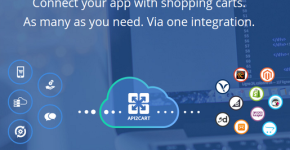Hiring remote employees is nothing new to the workforce. This hiring process has grown tremendously over the years as businesses learn about the benefits of hiring workers remotely. As with anything, there are both advantages and disadvantages to hiring remote workers. When it comes to the IT industry, however, the benefits seem to far outnumber the setbacks.
If you want to successfully hire remote workers for web design and development projects, it’s important you understand the process. Knowing the challenges and how to overcome them can give you several advantages in your industry. Let’s take a closer look at how to hire Magento developer and how to manage remote teams effectively.
Remote Workers in the IT Industry
While working with remote teams has become common in most business industries, remote work in the IT industry is particularly common. Remote IT jobs made up an $85.6 billion industry in 2018, according to Statista. Remote work is certainly not a trend, but a new way of sustaining employment in 2019.
When it comes to the IT industry, there are several advantages to outsourcing jobs and hiring remote workers from all over the world. The benefits of using a remote developer include:
- Increased productivity and fewer distractions amongst employees
- Reduced business costs such as office space, paid time off, and salary rates
- Higher employee retention
- Access to a wider tech talent pool
- Better lines of communication
- Extended hours of operation working across multiple time zones
- Diversified workforce
Over the years, the process of hiring remote workers has expanded to include several options for businesses when it comes to hiring. Remote, outstaffed, and outsourced are all means of hiring remote workers. They each have their own pros and cons, but all deliver the same advantages listed above.
How to Overcome Most Common Challenges of Hiring Tech Professional
The IT industry is ever-changing. You need to make sure you hire a developer or team that is up-to-date on the latest technologies. Have an in-depth discussion about the work you need to be done. What will it look like? What functionality do you need? The more information you provide when talking to a prospective developer, the more likely you will be to find the perfect match for your project requirements. Here are some of the common challenges businesses face and how to overcome.
Evaluating Developers
When you hire any type of developer, you need to make sure they have the right technical background and skill sets to deliver your project successfully. While professional staffing services can help you find a developer, they charge for these services. It’s easy to find a variety of IT talent by looking on your own, but you need to make sure you know what to look for before you hire.
Don’t just accept the technology skills on resume as good enough. You need to dig deeper. Ask for examples of their work. Discuss some other remote projects they’ve done. Talk about what type of remote work they are willing to perform. It’s best to go into the interviewing process with a team so you make sure all questions are asked.
Locating Talent
When it comes to the talent pool, your opportunities are endless. This can be a downfall, however, if you get overwhelmed. Try to find a source for locating talent that works for you. You need to decide whether you will hire local remote workers, choose IT outstaffing services, or outsource an offshore software development team. Once you make this choice, you can find a source for developers that works best for you.
Navigating Different Cultures
One of the biggest challenges businesses face is navigating different cultures when outsourcing. The best way to overcome this issue is to be upfront about your expectations. While your way of conducting business might not be commonplace in a developer’s country, discussing your expectations can overcome this easily.
Geographic Constraints
Businesses who hire locally or within their same country often meet geographic constraints. It’s important to be open-minded when it comes to hiring developers. This is the key to choosing the best option for your project needs. When you lift the constraints of your geographic location, you open the door to endless possibilities with talent across the globe.
Which Remote Hiring Model Works Best?
When it comes to choosing between the different remote hiring models, the right choice truly depends on the scope of your project. But, you need to understand how each model works before you can begin to decide which is right for your business. As mentioned earlier, there are several types of remote workers. Each option fits a different project. The three main models are:
- Local remote workers
- Outsourced remote workers
- Outstaffed remote workers
Local remote workers are employees who live in the same country as your business. They don’t report to the office daily, but instead, work from home. While the term local usually gives the perception that the employee lives close to the business, local remote workers can live on the opposite side of the country than the business location. Local remote workers can work full-time, part-time, or as a freelance worker who takes on a specific project. The main benefit of choosing a local remote worker is that they are less expensive than hiring a full-time employee, but they work from your home country.
Outsourced remote workers can come from anywhere in the world. Many businesses choose to outsource their work to other countries. This can be done for a number of reasons. Outsourcing work to other countries can give additional cost savings as a remote programmer salary around the world is different from country to country. In addition to finding the best option financially, outsourcing opens the door to a variety of possibilities when it comes to the talent pool. With outsourcing, you aren’t limiting the talent to local developers.
The final model, outstaffing, is similar to outsourcing. The difference in the two is that a remote employee who is hired under the outstaffing model would work closely with the client until the end of the project. Outsourced projects deliver the requirements and timeline and workers deliver the completed project in its entirety. Oustaffed projects check in on a daily basis so every part of the team is involved with the progress along the way.
Is Remote Work the Future?
When it comes to development projects, outsourcing is an extremely popular hiring option in today’s business world. The shift towards remote work in the IT industry is only expected to grow. That’s because the technology world grows by leaps and bounds every day. As technology rapidly changes, we have seen a global skill shortage in the IT industry. So, as the demands grow, the number of developers available to deliver your project successfully is limited.
The great news is that outsourcing your development work can provide you with the resources you need to complete your next project. Businesses who take advantage of outsourcing find themselves ahead of their competition. As countries like Ukraine turn over newly graduated IT professionals at a rapid rate, outsourcing has become the key to success for many businesses in need of development that involves the latest technology in the industry.
In 2019, we can expect to see:
- A rise in outsourcing with the outsourcing market predicted to reach $220 billion by 2020.
- A variety of new business services being outsourced as companies continue to see the benefits of remote work.
- Increased demand for AI experts as intelligent automation takes over the IT industry.
- Increased demand for cloud computing services as more and more business perform operations over the cloud.
The need for businesses across all industries to deploy mobile apps to stay relevant and competitive as more users shift to mobile platforms and IoT becomes more popular.
There is no doubt that remote hiring is the way to go in the business world in 2019. As the IT industry continues to grow, you need to be sure you not only hire the best remote workers but that you choose the perfect fit for your business. Explore all your options and do your homework and you’ll have the peace of mind that you’ve chosen the best when it comes to your business.




